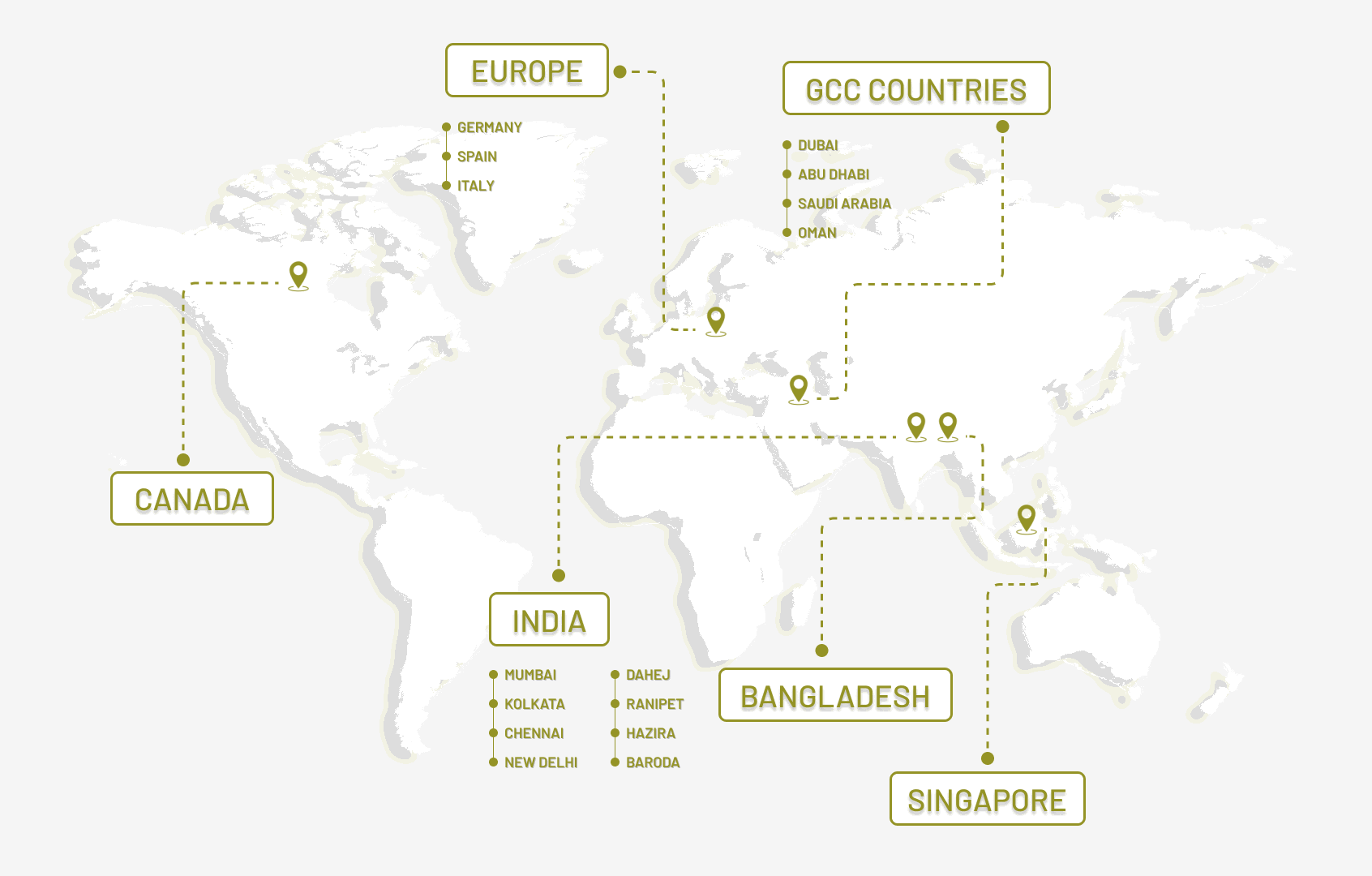Logistics Marvel: Overcoming Challenges in a Unique Multimodal Transportation Project
date:July 4, 2023
place: India

date:July 4, 2023
place: India

1. Introduction
The following case study highlights the exceptional execution of a ground-breaking multimodal transportation project undertaken by a renowned logistics company for Larsen & Toubro (L&T). The project involved the transportation of site machinery from three different locations to Pachpadra, Barmer, Rajasthan, India, while considering political and geological considerations due to the proximity to the Pakistan border.
2. Project Overview:
2.1 Scope and Cargo Details
The project encompassed the transportation of 34 Super Over Dimensional Cargo (SODC) units, with maximum dimensions of 55 meters in length, 9.7 meters in width, and 9.7 meters in height, weighing up to 743 metric tons.
2.2 Logistics Strategy
The logistics team worked concurrently in three ports: Dahej, Hazira, and Mangalore, managing the load-outs of the heavy and oversized equipment. The project also utilized self-propelled barges and other specialized vessels for sea transport, as well as road transport for the final leg of the journey.
3. Sea Transport Operations:
3.1 Barge Deployments and Routes
Barge Deployments and Routes Two self-propelled barges, were deployed alongside 250 class barges for back-to-back trips. Two trips were made from Hazira to Mundra, carrying 15 equipment units, while one trip transported eight units from Mangalore to Mundra. The remaining cargo was transported using three back-to-back barge trips utilizing two 250 class barges.
3.2 RORO Method and Challenges
The project involved Roll-on/Roll-off (RORO) operations, which were completed within 75 days across all ports. Notably, side loading on a DB6 self-propelled barge at Hazira was performed for the first time in India. Overcoming strong currents and a narrow time window for roll-on operations presented significant challenges.
4. Discharge Operations and Challenges:
4.1 Jetty Construction and Berthing
A dedicated jetty was constructed at Mundra for the discharge operations. Despite challenges in securing immediate berthing at the container terminal, the team successfully completed the Mediterranean position discharge from the barges.
4.2 Storage and Convoy Formation
Upon arrival at Mundra, a substantial land space was allocated for equipment storage and convoy formation. The team ensured safe loading and combination formations, utilizing up to 56 lines in different formats.
5. Road Transport Challenges:
5.1 Route Challenges and Preparations
The 600-kilometer road journey from Mundra to Barmer presented various challenges. The narrow and single-lane roads in Gujarat, coupled with multiple railway level crossings, necessitated liaising with Indian Railways for permissions and route closures to enable the safe passage of the convoys.
5.2 Infrastructure Adaptation
Numerous high-tension wires and road furniture along the route required meticulous planning and coordination with relevant authorities for electric shutdowns, removal of obstacles, and construction of over 40 bypasses to accommodate the heavy cargo.
6. Overcoming Narmada River Canal Challenge:
6.1 Political Liaison and Bridge Construction
The most significant challenge emerged when the project had to cross the Narmada River Canal, which supplied water to Rajasthan from Gujarat. Political negotiations between the two states were crucial in obtaining a No Objection Certificate (NOC) from Rajasthan to halt the water flow for 15 days. Two bridges were constructed on the canals using 600 metric tons of steel, ensuring a safe passage for heavy vehicles.
7. Humanitarian Impact and Success:
The transportation project not only marked a historic achievement in the Indian logistics sector but also generated significant employment opportunities. Thousands of workers were involved in various stages of the project, demonstrating its positive impact on the economy and society.
8. Conclusion
Through meticulous planning, strategic coordination, and innovative solutions, the logistics team successfully executed a ground-breaking multimodal transportation project for Larsen & Toubro. Overcoming challenges such as political considerations, geographical hurdles, and the massive scale of the cargo, the project paved the way for future logistics endeavors and solidified the company's position as a pioneer in the industry.
For more information Visit www.prismlogistics.in








